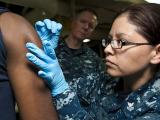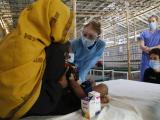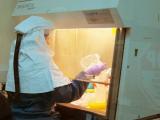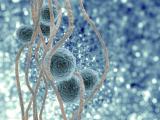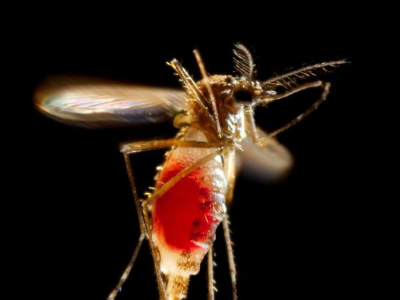Feb 21, 2008 (CIDRAP News) Officials at Texas A&M University announced yesterday that the US Department of Health and Human Services (HHS) has accepted the school's offer to pay a $1 million fine in connection with a 2007 report on several safety violations at its biodefense laboratory.
Elsa Murano, who became Texas A&M's new president about 6 weeks ago, told reporters yesterday at a press conference that she proposed the large fine so that the university could more quickly resume its biodefense work, which has been on hold since the US Centers for Disease Control and Prevention (CDC) suspended work at the lab in July 2007.
The CDC halted work with select agents and toxins at the lab after the Sunshine Project, a nonprofit group that monitored biodefense research safety before it suspended operations earlier this month, exposed several safety violations at the lab. The lapses included lab workers infected with the category B bioterror agents Brucella and Coxiella burnetti.
"Texas A&M has made tremendous research strides, and it's crucial that we resume our work at the earliest date," Murano said. "Our top priority will always be the safety of our students, faculty, and the community."
After the CDC stopped work at the lab, it investigated and released a report in September that detailed a long list of safety violations, including instances in which the school didn't immediately report or neglected to report lab worker infections or exposure to the pathogens.
Murano said she expects a team from the CDC will make a follow-up visit to campus in early March to verify that the school has corrected the safety problems, which would allow Texas A&M to resume its select agent work.
An official with the HHS Office of Inspector General (OIG) said the fine is the largest ever for violations involving select agents and toxins, the Austin American-Statesman reported today.
Donald White, a spokesman for the HHS OIG, said the department's regulations allow $500,000 per violation, "and there were numerous violations, over a dozen," according to the American-Statesman article. "So there was disagreement between OIG and Texas A&M on that point," White said, according to the article. "In the end, Texas A&M agreed to pay $1 million."
Murano said work done at the biodefense laboratory represents 1% of the university's $570 million annual research expenditure. However, she said yesterday that the work "is, nonetheless, a significant and critical part of our efforts to protect the citizens of our community, state, and nation from those who may choose to do us harm." She added that Texas A&M will pay the fine from its research compliance funds.
"We will continue to cooperate fully with the CDC to develop a model program for research and compliance," she told reporters.
The large fine that Texas A&M will pay sets a new standard of accountability for other research institutions that conduct work on select agents and shows that the university is serious about maintaining a safe program, Murano said. "This is serious. It's important for us to have robust safety controls."
Edward Hammond, who directed the Sunshine Project when it revealed the violations at Texas A&M, told the American-Statesman that the Texas A&M lapses were the most egregious violations of their kind that have ever been publicized, and that though the fine is significant, it's unclear what effect the amount will have on other institutions.
"I don't know how much of a deterrent a million dollars is. I think the biggest deterrent, or the heaviest price, has related to publicity," he told the paper.
See also:
Feb 20 Texas A & M press release
Sep 6, 2007, CIDRAP News story "Texas A&M chief vows to fix biodefense lab problems"

